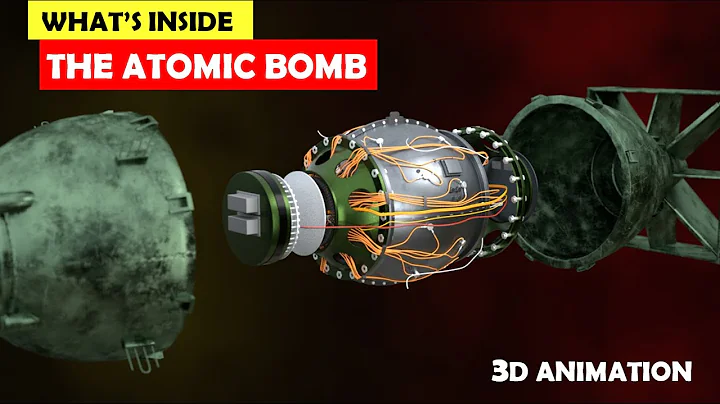Ultimate Guide to Generator Carberator Repair
Table of Contents:
- Introduction
- Tools Required
- Disassembling the Carburetor
- Cleaning the Jets
4.1. Removing the Corroded Jets
4.2. Cleaning the Jets with Carb Cleaner
4.3. Checking the Floats
- Reassembling the Carburetor
- Verifying Fuel Flow
- Troubleshooting
- Final Testing and Installation
- Conclusion
Introduction
When it comes to fixing a generator, one of the common issues that users face is a carburetor problem. A clogged or dirty carburetor can cause the generator to not start or run properly. In this article, we will guide you through the process of cleaning a carburetor to get your generator working again. We will provide a step-by-step guide with detailed instructions and highlight any potential challenges you may encounter along the way.
Tools Required
Before you begin the carburetor cleaning process, it is essential to gather the necessary tools. Here are the tools you will need for the job:
- Phillips head screwdriver
- Flathead screwdriver
- 10 millimeter wrench or socket
- Needle set
- Eyeglasses (for better visibility)
- Carb cleaner
Disassembling the Carburetor
To start cleaning the carburetor, you need to disassemble it first. Follow these steps:
- Remove the screws from the cowling covering using a Phillips head screwdriver.
- Use the 10 millimeter wrench to remove the nuts from the air intake and exhaust grates.
- Locate the fuel drain screw and use a Phillips head screwdriver to open it.
- Turn the on/off switch to the "on" position and check if the fuel flows. If not, the fuel line may have an obstruction.
- Disconnect the throttle cable and the fuel line from the carburetor.
Cleaning the Jets
One of the main culprits for carburetor issues is clogged jets. Follow these steps to clean the jets:
Removing the Corroded Jets
- Carefully remove the carburetor from the generator.
- Identify the jets and remove them using a screwdriver. Be cautious not to damage them in the process.
Cleaning the Jets with Carb Cleaner
- Spray carb cleaner into all the holes and passageways of the jets.
- Use a needle to clear any debris or buildup in the jets.
- Ensure that the jets are completely clean and free from any clogs.
Checking the Floats
- Inspect the floats for any damage or sticking. Clean them if necessary.
- Make sure the floats move freely and are not obstructed in any way.
Reassembling the Carburetor
Once the jets are clean and the floats are checked, it's time to put everything back together:
- Slide the carburetor back into its place.
- Tighten the screws and nuts that hold the carburetor in place.
- Reconnect the fuel line and throttle cable.
- Secure the air intake and exhaust grates with the nuts.
- Close the fuel drain screw securely.
- Check for any loose connections or remaining screws.
Verifying Fuel Flow
After reassembling the carburetor, ensure that there is an uninterrupted flow of fuel:
- Turn on the fuel switch and check if the fuel flows steadily.
- If there are any obstructions or fuel flow issues, troubleshoot the problem.
Troubleshooting
Sometimes, even after cleaning the carburetor, issues may persist. Here are a few troubleshooting steps you can take:
- Verify the continuity of all the connections.
- Check the spark plug and ensure it is clean and functioning correctly.
- Inspect other components of the generator for any potential problems.
Final Testing and Installation
Once you have addressed any underlying issues, it's time to conduct a final test:
- Start the generator and observe its performance.
- Ensure that the generator runs smoothly and produces the expected power output.
- If everything seems to be working correctly, proceed with the final installation of the generator.
Conclusion
Cleaning a carburetor is a necessary task to maintain the proper functioning of your generator. By following the steps outlined in this article, you can successfully clean a carburetor and get your generator running smoothly again.
Highlights:
- Learn how to clean a generator carburetor
- Step-by-step instructions for disassembling and cleaning the carburetor
- Troubleshooting tips for persistent issues
- Final testing and installation guidelines
FAQ:
Q: Why is it important to clean the carburetor of a generator?
A: Cleaning the carburetor ensures that the fuel is properly mixed with air and delivered to the engine, improving fuel efficiency and overall performance.
Q: What tools are needed to clean a generator carburetor?
A: You will need a Phillips head screwdriver, a flathead screwdriver, a 10mm wrench or socket, a set of needles, eyeglasses, and carb cleaner.
Q: How do I know if my carburetor jets are clogged?
A: Common signs of clogged jets include difficulty starting the generator, irregular engine performance, and reduced power output.
Q: Can I clean the carburetor without removing it?
A: While it's possible to clean some parts of the carburetor without removing it, a thorough cleaning typically requires disassembling the carburetor.
Q: What should I do if my generator still has issues after cleaning the carburetor?
A: If the generator is still experiencing issues after cleaning the carburetor, consider checking other components, such as the spark plug or fuel filter, for potential problems.
 WHY YOU SHOULD CHOOSE SaasVideoReviews
WHY YOU SHOULD CHOOSE SaasVideoReviews







